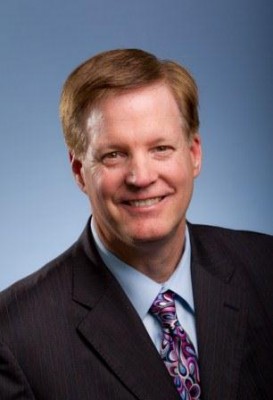Story by Doug Carroll
GCU News Bureau
Photo courtesy of A.T. Still University
Dr. Craig Phelps remembers when there literally wasn’t room for an athletic training staff at GCU.
“The training room was a small closet in the northeast corner of the old gym,” he says. “Two people at a time could fit.”
That meant space only for an athlete plus a doctor or athletic trainer — and in those days, 27 years ago, Phelps sometimes functioned as both. As a then-recent graduate of A.T. Still University’s Kirksville (Mo.) College of Osteopathic Medicine, he didn’t mind.
He enjoyed working with athletes, and the feeling was mutual.
“He did it because he felt that’s what doctors do,” says Keith Baker, GCU’s longtime director of athletics. “He gave back, and for little in return. He’s as down-to-earth as you get. When you went to see him (as a patient), he spent time with you.”
That relationship has come to an end for Antelope athletes with Phelps’ appointment on July 1 as the new president of A.T. Still. In his position, he will commute between the university’s campuses in Kirksville and Mesa.
He’ll be missed all over metropolitan Phoenix. Phelps, 55, also served as the primary-care physician for the NBA Phoenix Suns and WNBA Phoenix Mercury. He cared for athletes from the MLB Seattle Mariners, the NHL Phoenix Coyotes and three community colleges. He was the doctor for Ballet Arizona, too.
“I can’t praise him enough,” says Geordie Hackett, GCU’s head athletic trainer for the past eight years and also an A.T. Still alumnus. “He never got paid for his position (at GCU). There were referrals to his practice, yes, but he came out and covered games for us gratis.
“For years, he was doing evaluations and treatment — the things I do now.”
Thankfully, GCU’s athletic training department evolved from the closet setup, first to a slightly larger storage room and then to a 1,200-square-foot locker room in the North Gym.
Two years ago, with the opening of the Student Recreation Center, a full 2,500 square feet in the practice facility’s northwestern corner was dedicated to athletic training, overseen by Hackett and his staff of six. Satellite training rooms are in place on campus in the baseball clubhouse, the South Gym and GCU Arena.
Hackett recalls Phelps digging into his own pockets for one of GCU’s first whirlpool tubs and also springing for its first injury-tracking software system. Over the years, the steady improvement in athletic training methods and resources had a common denominator: the generosity and dedication of Phelps.
“We didn’t have certified athletic trainers (years ago),” Baker says. “The supervision of the team doctor was more important then, because of that.”
Along the way, Phelps became the primary-care physician for Baker’s family, helping with various health concerns involving Baker’s oldest son, Brian.
“He got us headed in the direction of the right specialists,” Baker says. “He knows our family well.”
Phelps says he will oversee some dynamic changes at A.T. Still, including the launch of a dental school in Missouri next summer. The university has an enrollment of 3,000 students between its two campuses, and a third campus, in California, is in the planning stages.
He’ll be busy, but he says there’s no chance he will ever forget GCU, where he began watching games when he was still in elementary school. He says his work with sports teams had crossover applications.
“I enjoy the determination of athletes,” Phelps says. “They’re highly motivated. I came to realize that all of us are athletes. We’re either in training or not in training. Working with athletes gave me great perspective in family practice.
“The care (of GCU athletes) has kept pace with the best, and Geordie is a good example of that. It’s a high level, and it’s consistent with where Grand Canyon wants to go.”
Contact Doug Carroll at 639.8011 or [email protected].
















